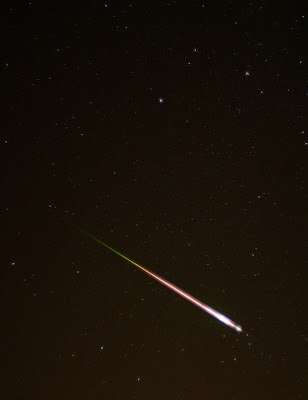 |
| Image Credit: Ed Sweeney. |
Guess who’s coming home for the holidays? Russia’s broken 15-ton Mars probe. Well, probably. You know how unreliable malfunctioning probes can be. Early reports claimed the unmanned spacecraft would reenter the Earth’s atmosphere around November 26, just in time for Thanksgiving leftovers, but now it’s looking more like late December or early January (which could still qualify for Christmas if you go by the Russian Orthodox calendar).* All this, of course, is assuming that the prodigal probe doesn’t change its mind again and decide to complete its originally scheduled mission to Mars.
You might be interested to know that Russia has been aiming various contraptions at the Red Planet for about half a century without much luck (I know, kind of ironic during the Soviet years). Following a 1996 mission failure, the past 15 years have been silent of Mars attempts, but on November 8th, Russia got back on the horse and launched Phobos-Grunt into space. The space-bot’s goal was a lofty one: land on the surface of Phobos – Mars’s largest moon – collect soil samples, and then bring them back to Earth.† To achieve this, the probe needed to fire a second set of engines after its initial launch, which would direct it toward Mars. Everything went swimmingly for the launch, but the probe failed to activate those second phase engines. Now it’s stalled in Earth orbit, circling the planet as though it can’t find the on-ramp to the freeway.
Russian scientists are frantically working to reestablish communication with the probe. It’s seemingly intact and its fuel tanks are full and ready to complete the journey. Russia would like nothing more than to reboot the probe and send it on it way, but Phobos-Grunt is not taking their calls.
With the window to set the wayward spacecraft back on track narrowing, what you should really be asking yourself is how and where Phobos-Grunt will land, should it fall back to Earth. Because it was suited up to go all the way to Mars and back, most of the probe’s 15-ton mass is composed of fuel, which would allegedly burn up upon reentry (probably generating an impressive fireball for anyone watching). But if any of the rocket fuel does reach the ground it’s not very reassuring to know that it’s composed of toxic hydrazine. Plus there’s still the possibility of probe shards to contend with. Early projections of likely landing sights included “most of the U.S., part of Europe, all of Africa and Australia and virtually all of South America and Asia”, which pretty much translates into “somewhere on Earth”.
Before you start accusing Russia of imperiling us all, I should mention that Phobos-Grunt is poised to be the third uncontrolled spacecraft reentry this season. NASA’s UARS satellite crashed into (probably) the Pacific Ocean on September 24, and just a month later, Germany’s ROSAT came down somewhere in Southeast Asia on October 23. ‡
Coincidentally, Phobus-Grunt was launched on the same day our planet had its much-publicized near miss with the asteroid 2005 YU55. The 400-meter (1,300-foot) diameter asteroid got within about 200,000 miles of Earth (which is closer than our moon, FYI). § The last time a huge asteroid got uncomfortably close to us was in 1976, so this isn’t exactly a once-in-a-lifetime occurrence. According to the Washington Post, NASA spends 5 million dollars annually keeping an eye out for asteroids capable of, you know, killing everything on the planet. (None scheduled for the near future, in case you’re wondering.)
So are you more likely to get hit by a satellite or an asteroid? Ugh, that question has far too many variables. Any satellite or asteroid? A specific one? Any person on earth or just you? I can tell you this much, apparently your odds of being killed by an asteroid are greater than the odds of being struck by one. And, if it’s any consolation, in all the years our species has been lobbing metal into outer space, only one person has ever been hit by the stuff on its return. That person was Lottie Williams of Tusla, Oklahoma, who in 1997 was clocked on the shoulder by a chunk of the Delta II rocket. She was fine.
* Russia being my place of birth, I use this excuse annually when presenting cards and gifts well after the western version of “the holiday season” is over.
† Hence the probe’s name. “Grunt” translates into soil. (It’s pronounced groont by the way.)
‡ ROSAT’s plunge was particularly threatening because it had primarily functioned as a telescope and, as such, was equipped with massive (over 1.5 tons total), and very heat-resistant mirrors – exactly the kind of thing you don’t want falling on your house… or your head.
§ If 400 meters sounds like an abstract and unimpressive figure to you, then you might prefer Purdue University professor Jay Melosh’s description of its potential impact, “If a space rock the size of 2005 YU55 ever hit Earth, it would explode like 500 nuclear bombs, trigger a 7.0 magnitude earthquake and, if it splashed down in the ocean, generate a 70-foot tsunami.”
Very nicely written, and I love how you're so humourous throughout :)
ReplyDeleteI wonder how much more space clunk is going to keep falling down on Earth. I always thought most of it would burn up in the atmosphere or something, but apparently not so.